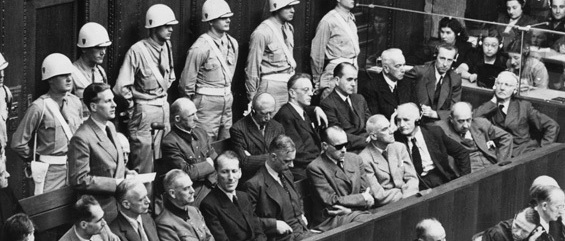Those Who Hanged at Nuremburg
Posted on 23rd August 2021
The First Nuremburg Trial (there were others later for lawyers, doctors, concentration camp guards etc) was an International Tribunal established to prosecute the leading members of the recently defunct Third Reich. It had been created primarily at the behest of the Americans who wanted to see Nazism indicted before the world. Winston Churchill had been in favour of the summary execution of the remaining leading Nazis, whilst Josef Stalin, never one to blanch at such an arbitrary and brutal solution to a problem had wanted any executions to incorporate the entire German General Staff, Civil Service and Legal Establishment, upwards of a 150,000 people.
The Americans won the argument, however. The Nazis would be tried in a Court of Law before a panel of Judges from the major Allied powers the United States, Great Britain, the Soviet Union and France. They would be given and be seen to be given the fair trial they had denied to so many others.
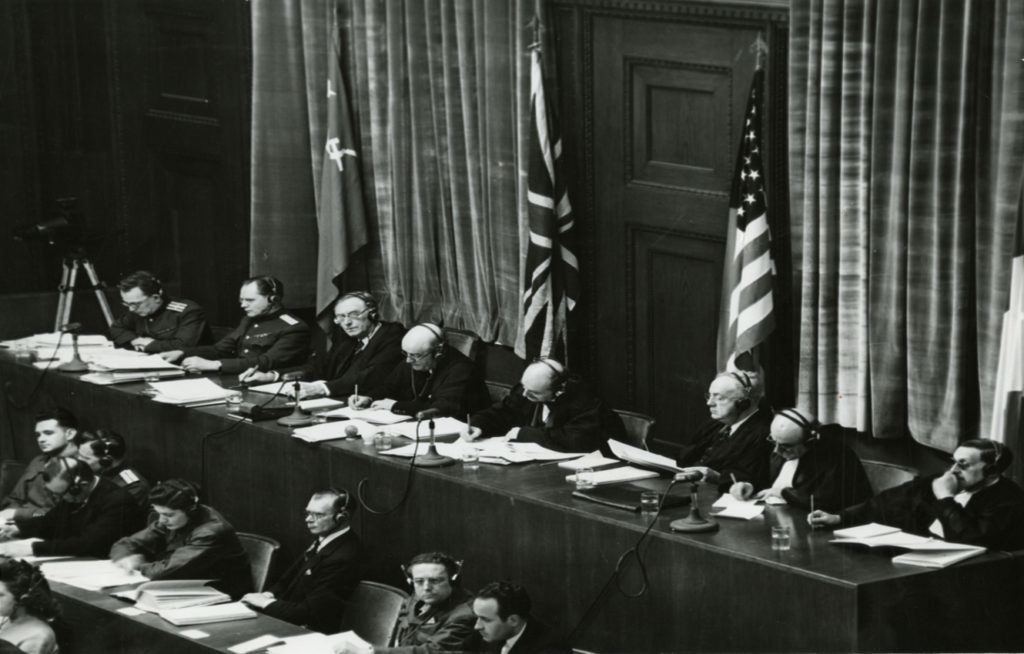
The indicted Nazis would stand trial accused on three charges:
1) Waging aggressive war
2) Crimes against humanity
3) Violation of the customs of war, or war crimes.
The prevailing problem with this indictment, and it continues to remain controversial to this day, is that the first two charges did not exist as crimes at the time they were supposedly committed. This may appear little more than a technicality and few people would deny the horrific nature of the crimes the accused were charged with but where does the individual stand in law if that law can be changed to criminalise the person of things, they would have been innocent of in the past?
If the law can be changed on the hoof so as to merely suit those in power at any given time, then its role as the bedrock upon which the security of society is based is undermined. This was a view that was expressed at the time. The Chief Justice of the United States Harlan Fiske referred to the Nuremburg Trial as a lynching party whilst Supreme Court Justice William Douglas stated that the “law was created ex post facto to suit the passion and the clamour of the time.”
These things said it is not my intention to provide a forensic examination of the legal minutiae that underpinned the trial or to engage in a discussion about the legal proceedings but to provide a pencil sketch summary of those who hanged, their background, their role and the crimes they committed.

Hans Michael Frank was born in Karlshruhe on 23 May 1900, into an affluent middle-class family. He fought briefly in the First World War and upon its conclusion studied to become a lawyer. He joined what was to become the Nazi Party in 1919 thereby becoming one of its earliest members. He rose rapidly through the Party ranks to become its legal representative and it has been suggested that while working as Hitler’s personal lawyer he uncovered the Fuhrer’s Jewish ancestry.
Hitler’s grandmother Maria Schickelgruber had worked in the household of a prominent local Jew, Leopold Frankenberger. After giving birth out of wedlock to Hitler’s father Alois Schickelgruber, she was forced to leave the household. Frankenberger continued to pay Maria’s wages until the day he died, however. Hitler explained this away by claiming his grandmother had been extorting money from her previous employer, though he could not say why. It was believed at the time that Frankenberger was effectively paying maintenance for the child that was either his or his son’s. Frank suppressed this information and on Hitler’s orders great efforts were made to extinguish all remaining information relating to his family background.
In September 1939, Frank was rewarded for his loyalty by being appointed Governor-General of Occupied Poland and was to remain so until its liberation.
He resided at the home of the medieval Polish Kings, Wawel Castle in Krakow, and behaved much as a King might. Indeed, his wife referred to him as the King of Poland and to herself as its Queen; and tasked with the Germanisation of the Occupied Territories his rule was as harsh and brutal as any tyrant before or since.
He set about his task with relish, Poles were forcibly removed from those border areas designated for colonisation by Eastern Europeans of German descent while others in their hundreds of thousands were sent to Germany to work as slave labour; Polish children of Aryan appearance were often removed from their families to be raised as Germans and it was ordered that no Pole was to be educated beyond the literate.
Frank ensured that resistance to German rule was swiftly crushed ordering that any German killed would see 50 Polish men executed in retaliation. When rationing was implemented, the Poles were to receive just 654 calories a day, a quarter of that provided for a German. Even so, it was considerably more than the 184 calories a day that the Jews were expected to survive on, though they rarely received even that and during Frank’s time as Governor of the General Government in Poland more than 5 million ethnic Poles and 600,000 Polish Jews were to die or be transported for extermination in the Concentration Camps.
Yet Hans Frank was no rough-house thug, indeed, he considered himself to be an educated and cultured man. He was a keen student of chess establishing a school for its teaching and presided at chess tournaments. He also opened a literary salon in Cracow, was a lover of opera and would entertain his guests with piano recitals.
In February 1945, he fled Poland ahead of the Soviet advance and was captured just before the war’s end on 3 May at Tegernsee in Bavaria. Roughly treated and beaten up by American soldiers he twice tried to commit suicide.
At the Nuremburg Trial, Hans Frank was one of only two of the accused (the other was Albert Speer) who showed any remorse for what he had done. On the witness stand he declared that “a thousand years will pass and the guilt of Germany will not have been erased.” He did however deny that he had any knowledge of the mass killings, stating that at best he only knew of them as a rumour and that he had indeed questioned Heinrich Himmler in February 1944, regarding the issue and was told categorically that no such thing was happening.
Sentenced to death Frank converted to Roman Catholicism and considered his coming execution as atonement and the expiation, of his sins. It was said that as he stood upon the gallows, he was the only one who did so with a smile on his face. His last words were “I ask God to accept me with mercy.”
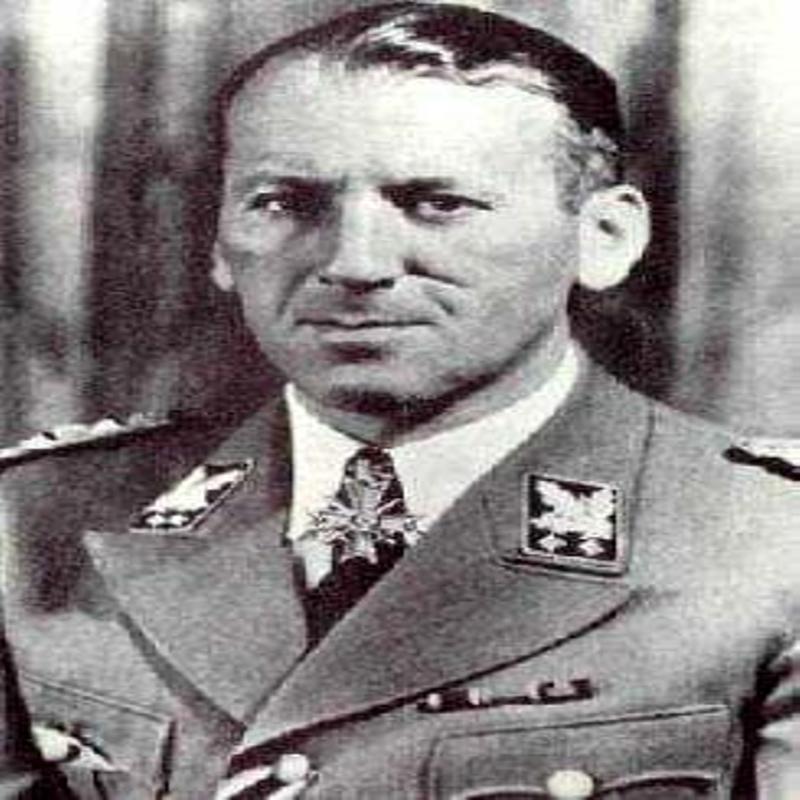
Ernst Kaltenbrunner was the archetypal Nazi, well over six feet tall he had his hair cropped close to his scalp and a face criss-crossed with scars which he said had been received in a duel but were in fact the result of a car crash following a drunken night out.
Like Hitler, Kaltenbrunner was Austrian by birth and like many Nazis from that particular country he was a vicious anti-Semite who quickly earned his reputation as a ruthless Nazi being implicated in the assassination of the Austrian President Engelbert Dolfuss in 1933. He also played a pivotal role in the Anschluss or the forced annexation of Austria into a Greater Germany in 1938 and was in time to become one of Hitler’s most trusted henchmen.
In the spring of 1942 Kaltenbrunner was to become Chief of the Security Police or SD following the assassination of Reinhard Heydrich and was now second only to Heinrich Himmler in the State security apparatus.
A volatile character with a temper even Himmler was wary of Kaltenbrunner was responsible for the Einsatzgruppen or death squads, the establishment of the Concentration Camps, the rounding up and torture of suspects and the murder of Allied prisoners-of-war. Indeed, there could have been few horrors committed in German Occupied Europe that he was either unaware of or not responsible for yet at his trial he was to deny it all.
The most senior member of the SS to be arrested at the end of the war he initially provided his captors with a false name and claimed to be doctor. His true identity was only revealed when an ex-lover of his recognised him, shouted out his name, rushed over and gave him a hug.
With his identity revealed he feigned illness in an attempt to avoid prosecution but this fooled no one and in the dock he was to cut a pitiful figure, this large brutal looking man whining that he was being persecuted and denying that the signature on the many hundreds of documents placed before him was his.
Despite himself being a qualified lawyer, his defence was chaotic and he later blamed his conviction on the Tribunal giving him an idiot attorney.
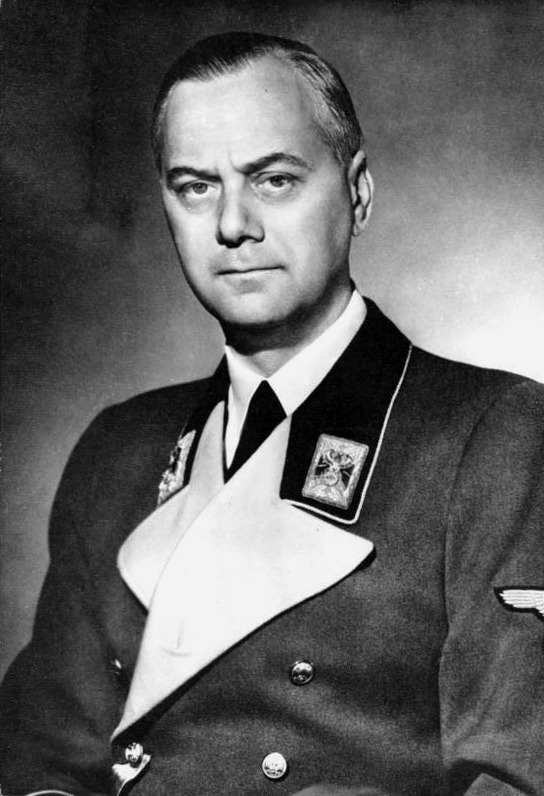
Alfred Rosenberg considered himself to be the ideological genius behind Nazi racial theory. There is little doubt that he provided the justification for the Nazi’s genocidal policies but to what extent he influenced their implementation is another matter. He was in many respects a philosophical confection of madcap ideas and delusional thinking. A weak and prevaricating man with his head in the clouds that many struggled to take seriously.
He had been born in the Estonian city of Tallin, supposedly of Baltic German descent, though there is some doubt that he was German at all. An architect by profession he early became obsessed with racial theory. He joined the forerunner of the Nazi Party in January 1919 and was also a member along with Rudolf Hess of the mystical Thule Society which sought to prove the existence of an Aryan race that had escaped the destruction of the Lost City of Atlantis and settled somewhere in Northern Europe. He had known Hitler for many years though the future Fuhrer appeared to have little respect for him. When he was jailed following the failed Munich Putsch, imprisoned and banned from all political activity he appointed Rosenberg temporary leader of the Nazi Party precisely because he did not deem him a threat. It was a foretaste of what was to come for he was to spend most of the time on the fringes of real power. He was to be editor of the Nazi newspaper the Volkischer Beobachter, established the Institute for the Study of the Jewish Question and wrote a great many books on racial theory which Hitler described as being “full of stuff that nobody can understand.”
In 1940 however, he was appointed Reich Minister for the Eastern Territories and was therefore directly implicated in the deportations and mass-murders that followed. He also had a representative at the Wannsee Conference in January 1941 that decided upon the Final Solution of the Jewish Question. So, he would have been fully aware of the fate of the Jews.
At his trial he was described as a bundle of nervous energy full of bitterness and bile, and throughout he showed no remorse insisting his views were correct and based upon fact. When he was asked on the gallows if he had any last words he simply shouted aggressively – No!
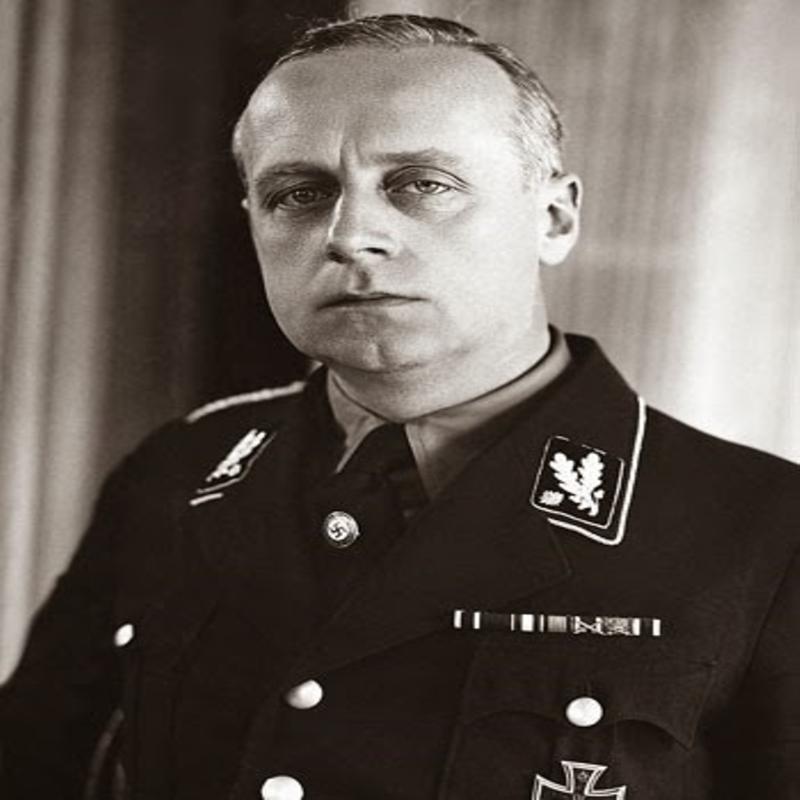
Joachim von Ribbentrop, the champagne salesman of whom it was said had risen way above his station and abilities was born in Wessel Prussia on 30 April 1893. He was to spend much of his early working life in Canada where he set up a business importing cheap German wines. He returned to Germany in August 1914, when war appeared imminent. Enlisting in the Army he served on the Eastern Front. He joined the Nazi Party late as a career move having never previously been known to be political. Indeed, he regularly worked alongside Jewish financiers and was known to be an admirer of the Russians. He did not appear to be a natural Nazi, but he was a keen social climber and his snobbery and arrogance ensured that he was heartily disliked by almost everyone else in the Nazi hierarchy.
Von Ribbentrop was a toady who rarely had an idea of his own, but he was a careful listener and when he thought he knew what Hitler wanted he delivered it. In February 1938, his toadying paid off when he was appointed Foreign Secretary. He was involved in the Munich Agreement, but his finest moment came with the signing of the Nazi-Soviet Pact on 23 August 1939 that cleared the way for Germany to declare war in the West.
He was arrested in June 1945, and his performance on the stand at Nuremburg so aggravated Hermann Goering that he declared in open court “Ribbentrop deserves to hang.”
Even at his execution he retained the arrogance and aloofness that so alienated his colleagues. His final words were obviously not enough and asked if he could say more, permitted to do so he wished peace for the world. They were hollow words.
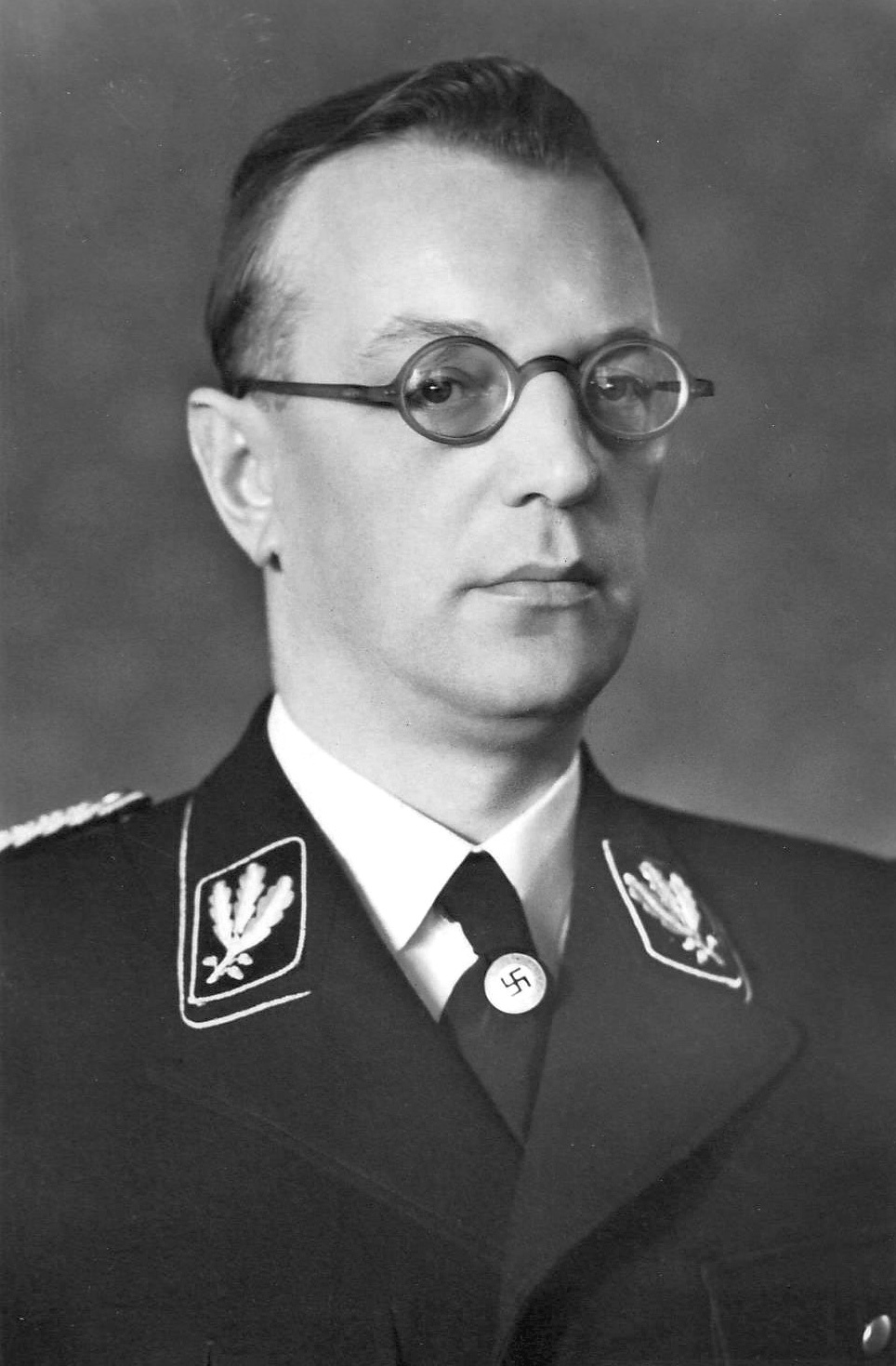
Artur Seyss-Inquart, real name Zejtich, was yet another leading Nazi who had trained as a lawyer. He had been born in the small town of Stannern in Austria in July 1892. After serving in Italy during the Great War he returned to Austria a man committed to far-right politics. He soon joined the Austrian Nazi Party and became a key figure in organising the Anschluss. He was to be well-rewarded for his labours when in 1940 he was made Reich Commissar of the recently conquered Netherlands.
A cold and officious man totally lacking in sentiment he never allowed the blood on his hands to sully the iron in his soul and of the 240,000 Jews in Holland fewer than 13,000 would survive the war. This he considered to be work well done
.
Despite the war nearing its end he allowed thousands of people in Western Holland to starve rather than allow the Allies to drop urgently needed supplies. In the dock he did not see any of this as being a crime. He was, he said, “merely obeying orders.”
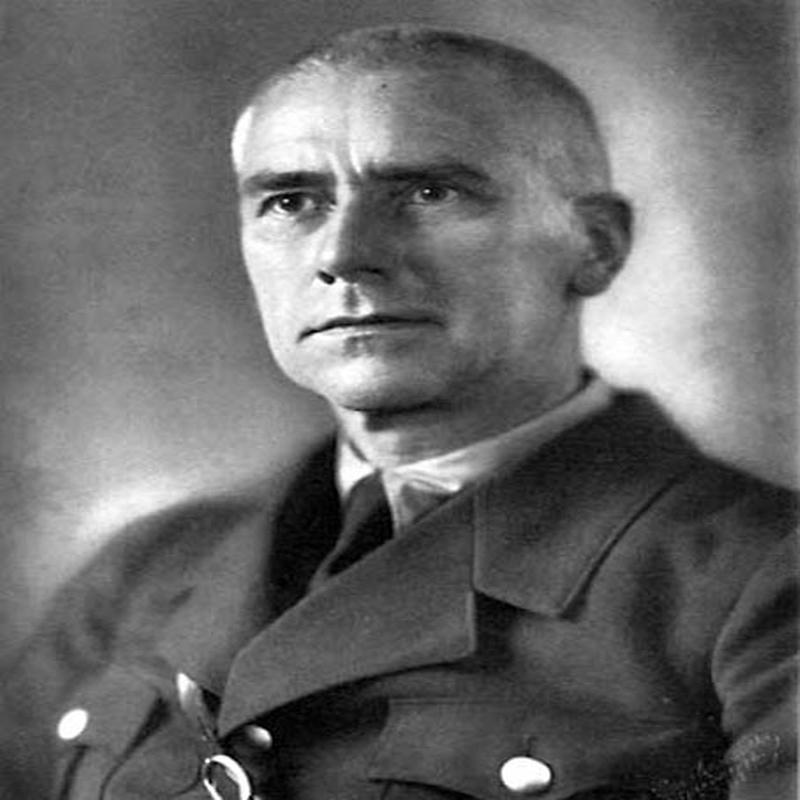
Wilhelm Frick was born in Alsenz, Bavaria, on 12 March 1877, and by the time of the Nuremburg Trial he was 69 years of age thereby making him the oldest of the defendants in the dock. He studied at Heidelberg University and joined the Civil Service in 1903. He did not fight in the Great War considered unfit to serve and joined the Nazi Party after living through the short-lived Rater Republik or Bavarian Soviet. He was to remain a committed Nazi for the rest of his life and was present at Hitler’s failed Beer Hall Putsch of 9 November 1923.
On 23 January 1930, he became Minister of the Interior for the State of Thuringia becoming the first Nazi to hold a ministerial position something he was very proud of. When Adolf Hitler became Chancellor in January 1933, Frick was appointed one of only two Ministers in the Coalition Cabinet, the other was Hermann Goering.
As Minister of the Interior, he was instrumental in the implementation of the Nuremburg Laws that excluded Jews from civil society and the Law for the Prevention of Hereditary Diseases that led to the T4 Euthanasia Programme.
Frick was the consummate bloodless bureaucrat who rarely dirtied his own hands, but he was also a weak man unable to compete in the dog eat dog world of Nazi power politics. By the late 1930’s his power and influence was already beginning to wane and in 1943 he was replaced as Minister of the Interior by Heinrich Himmler but by this time he had already helped establish the Concentration Camps.
He was to be the only one of those sentenced to death unable to control his fear on the day of his execution and had to be steadied and helped on his way to the gallows.

Fritz Sauckel, unlike many of the other leading Nazi’s was of low birth the son of a postman and a seamstress who having had little in the way of any formal education joined the merchant marine aged just 15. Neither did he have a glorious war record to fall back on having spent the entirety of it interned after the ship he was serving aboard was captured. Returning to Germany in 1919 he did a variety of menial jobs before training as an engineer. It was during this period that he first became politicised joining the Nazi Party in 1923 as member 1,395. The first thousand was in fact a made up number and he was in truth member 395 which made him one of the earliest Nazi’s. This provided him, despite his lack of a formal education, with the opportunity to rise quickly through its ranks by hard work alone and he was to become both a member of the Reichstag and a Gauleiter.
After working as an administrator on Hermann Goering’s economic Four-Year Plan upon the outbreak of the Second World War he was appointed Minister of Labour and it was his responsibility to keep Germany’s factories running. He was to complain constantly that he had insufficient labour to do so and as part of the Todt Programme he instructed that forced labour, mostly from the Occupied Eastern Territories be brought to Germany to work.
During the five years of conflict more than 12 million foreign nationals including prisoners-of-war, women and children worked in Germany as slave labour, though Sauckel was to deny at his trial that it was any such thing. As a result of maltreatment and neglect tens of thousands died.
The worst conditions were found in the Labour Camps attached to the major industrial complexes of companies such as Krupps, I.G Farben, Thyssen and Siemens where labourers were quite literally worked to death.
Sauckel was to deny all this at his trial claiming that he merely organised the importation of foreign labour and apportioned them to the various sectors of the German economy where they were required and that he had no control over how the camps were run or how the workers were treated. He was nonetheless sentenced to death.
He was still maintaining his innocence on the gallows declaring that “This is not justice, I die an innocent man.” Given that from 1943 his immediate superior at the Ministry of Munitions and the man who put him under intense pressure to provide sufficient labour to keep the factories running was Albert Speer, who avoided the death penalty, he had a point.
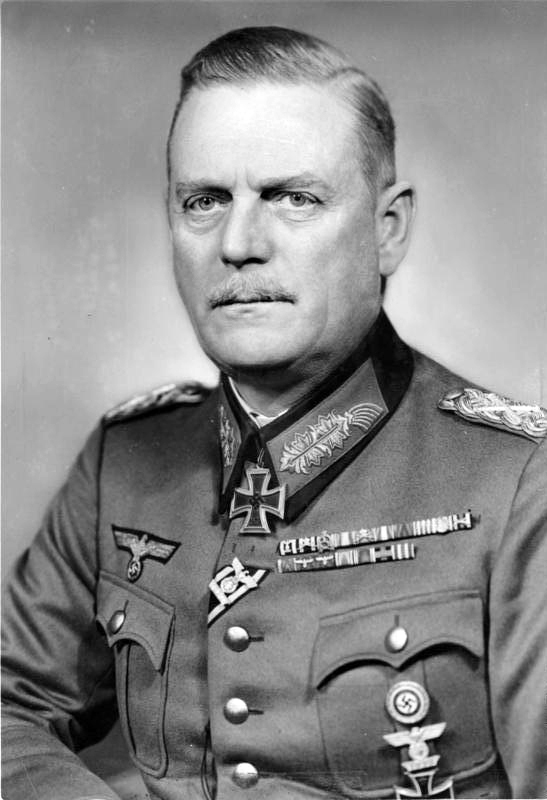
Wilhelm Keitel was the son of a wealthy landowner and considered himself to the manor born who a military cadet from an early age would be a professional soldier for the rest of his life. An officer and a gentleman he might be but his service as a front-line soldier was brief as wounded on the Western Front in 1914, he was then transferred to the German General Staff. His rise through the ranks of the General Staff was steady rather than spectacular but by 1937 he had been appointed Head of the O.K.W, or the Supreme Command of the German Armed Forces.
Less a committed Nazi than he was dedicated to the person of the Fuhrer who he considered a military genius he never disputed a decision and always carried out his orders without complaint. He may have considered himself a man of honour, but it never crossed his mind to question an order even when it contravened every code of warfare or even common decency.
On 6 June 1941, he issued the Commissar Order No1 which sanctioned the execution of all political commissars captured during the invasion of Soviet Union and on 28 October 1942, the Commando Order which ordered that captured British Commandos and all those all those caught not in military uniform were liable to torture and arbitrary execution. By doing so he committed the Wehrmacht of which he was so proud to a policy of murder.
At the surrender of the German Army he was shocked by the lack of respect afforded him, his salute was not returned and those present refused to shake him by the hand. In the dock he seemed to be genuinely moved by the footage shown of the Concentration Camps and though he denied knowledge of the mass-killings he did not shirk responsibility for his own actions. After the sentence of death was passed he requested to be shot like a soldier – his request was denied.
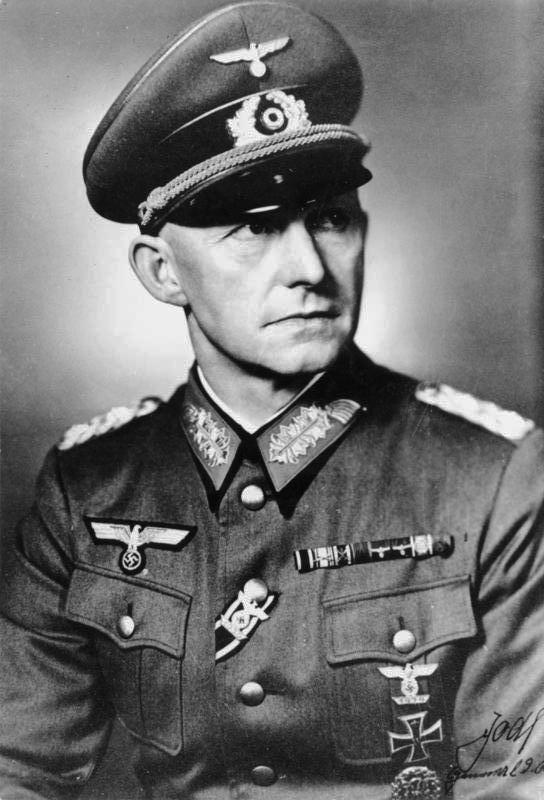
Alfred Jodl who was a professional soldier his entire adult life rose to become second-in-command to Wilhelm Keitel, and it is the sentence of death passed on him at Nuremburg that remains the most controversial as he was the only one of the condemned men who could with some justification claim he was simply obeying orders.
He was in effect Wilhelm Keitel’s dogsbody and he distributed instructions and counter-signed the documents on decisions that had already been taken but it would be wrong to imagine that he was anything but a committed Nazi. He had been a long-term party member and, in the years, immediately preceding the war had been a close personal confidante of the Fuhrer’s.
Jodl’s guilt remains beyond doubt and it was his counter-signature on so many kill documents that was to condemn him; but whether in his role as the efficient Staff Officer he warranted the death penalty when so many others more deeply implicated in the crimes of the Nazi regime were sentenced to terms of imprisonment remains a point of issue.
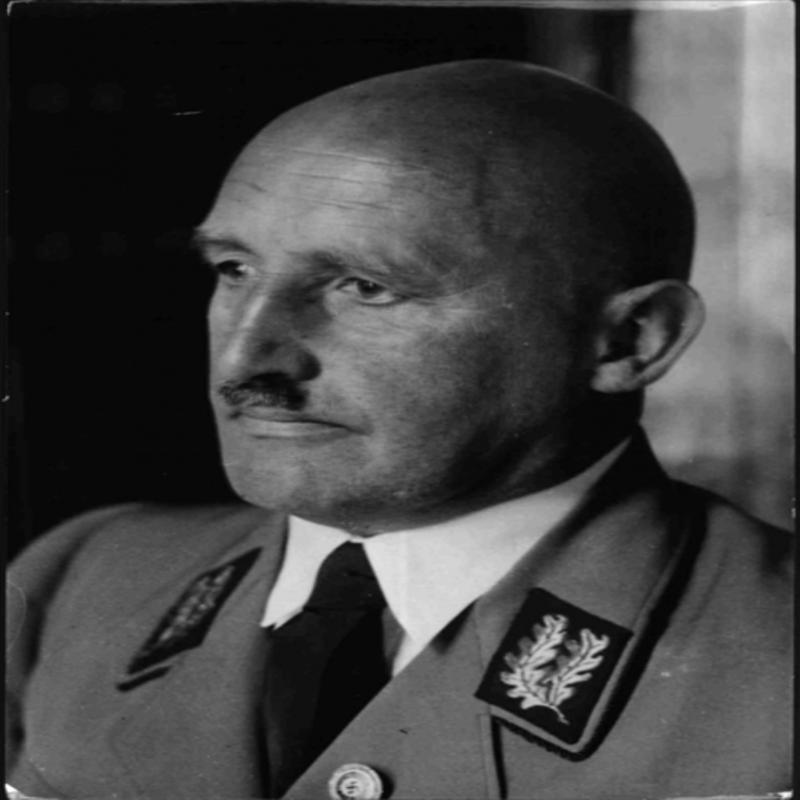
Julius Streicher, though he was possibly the most unpleasant character in a rogue’s gallery of moral vice and human corruption was possibly the least culpable for the crimes of which he was accused. He had played no significant part in the creation of the Nazi State apparatus, in the development of policy or in the running of the war. His role had been as the great proselytiser and pornographer-in-chief.
Born in 1885, in Fleinhausen, Bavaria, he was a schoolteacher before enlisting in the German Army upon the outbreak of war in 1914. He had by all accounts a good war surviving relatively unscathed throughout and winning the Iron Cross. But he had no interest in remaining in the army his great interest was politics and journalism which he saw as a means of voicing his virulent anti-Semitism.
In 1922 he had been overwhelmed by emotion after hearing an early speech by Adolf Hitler whom he came to believe to be the redeemer of Germany’s fortunes and he joined the fledgling Nazi Party soon after.
In 1923, he published a weekly tabloid style magazine called Der Sturmer that made no pretence to being anything, but an anti-Jewish hate rag and it soon became notorious for its obscene caricatures and scare stories such as the blood libel as in its pages the Jews were described as being physically deformed, unclean and sexually depraved vermin who were both blood-sucking capitalists and Godless communists. Such was the degree of hate spewed out by Der Sturmer and the levels of vile abuse to which it stooped that the Nazi Government thought it better to distance itself from it but by 1935 it was selling almost 500,000 copies a week and its slogan “The Jews are our Misfortune” was particularly favoured by Hitler.
Despite Streicher being deeply loathed by many of the leading Nazi’s, especially Goering who banned Der Sturmer from the offices of the many departments he ran and was critical of those who read it, it was to form an integral part of Nazi propaganda.
For his loyalty in the early days Streicher was appointed Gauleiter of Franconia. He revelled in his new position of power and was regularly seen on the streets of Nuremburg in his immaculately pressed military style uniform and shiny black cavalry boots. Indeed, short, stocky, with his shaven head and carrying a riding-crop or bull whip he had the appearance of a malevolent dwarf.
By 1941, with the extermination of the Jews now Nazi policy he had been effectively side-lined though he was to continue his anti-Semitic rants in lectures, radio broadcasts and in the pages of Der Sturmer.
Like most of the leading Nazi’s at the war’s end he took no responsibility for his actions and had every intention of evading capture if possible. He delayed his flight however to marry for the second time, the delay was to prove fatal as just days later he was apprehended by a unit of American soldiers led by a Jewish Officer.
Whilst in confinement at Nuremburg his behaviour was so deplorable that he was shunned by the other prisoners. He refused to change his clothes, bathe or wash himself and spurned the use of a spoon eating his food with his fingers. He also complained bitterly about being guarded by black soldiers and claimed that he was tortured and that the Jews were trying to poison him.
Julius Streicher remained defiant to the end refusing to confirm his name on the gallows and stating that the entire execution process was nothing but a Jewish festival of bloodletting. When he was asked if he had any last words, he simply screamed an ear-splitting Heil Hitler!
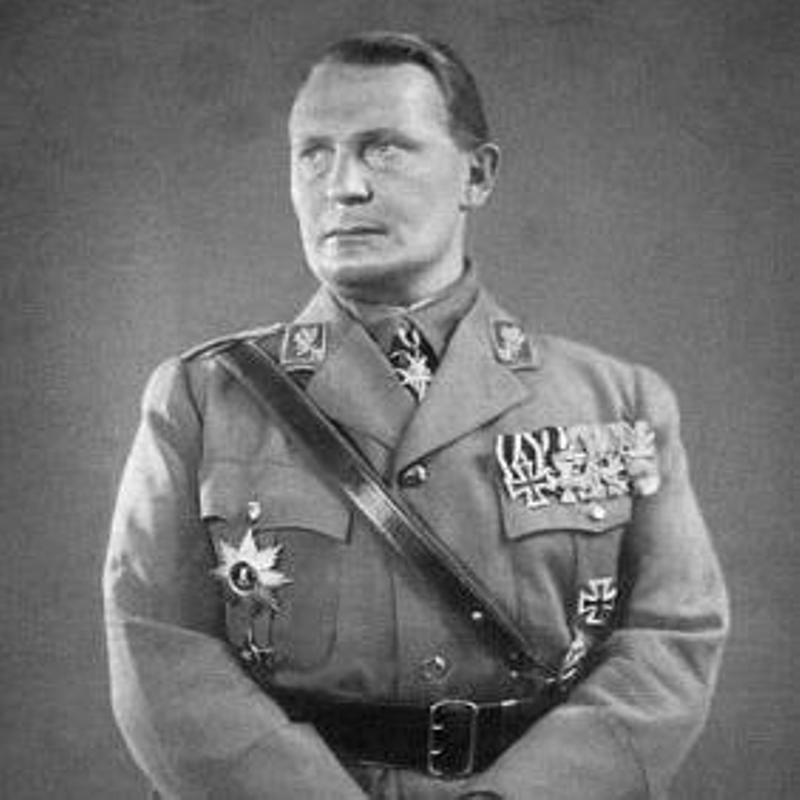
Hermann Goering was born in Rosenheim, Bavaria, on 12 January 1893, into an aristocratic family if one that had fallen on relatively hard times. Even so, as a boy he had time to dream and what he dreamed of becoming was one of the Nordic heroes he spent so much time reading about - in this at least he would succeed.
He had been a Great War fighter ace who had taken command of Manfred von Richtofen’s famous Flying Circus following the Red Baron’s death. He was to end the war with 24 confirmed kills to his name and was awarded the Iron Cross First Class and the Pour le Merite.
After the war he was at a loss what to do so and did various jobs unable to settle. What he was seeking was excitement and he found it in the febrile politics of post-war Germany. In 1922 he joined the Nazi Party where he quickly became an SA commander and rose rapidly through the ranks of the Nazi Party becoming Hitler’s most trusted lieutenant.
During the years of Nazi rule, he was to hold an enormous number of ministerial portfolios including President of the Reichstag, Minister of Economics and Commander of the Luftwaffe. It seemed there was little that occurred in Nazi Germany he was not involved in and after Hitler he was the most powerful man in Germany. In July 1941, he was appointed the Fuhrer’s designated successor.
Though he was not officially the leading Nazi at Nuremburg, that dubious honour fell to Admiral Karl Doenitz the last President and Chancellor of Nazi Germany, he was the only one of the political big beasts present after Hitler, Himmler and Goebbels had all evaded justice by committing suicide.
The always bluff and amiable Goering dominated the proceedings at Nuremburg displaying a high-minded ruthlessness that permitted him to wield an almost hypnotic control over the other defendants.
In the dock he was prove similarly formidable. Indeed, so much so that it was genuinely feared by the prosecution that he would be acquitted on the most serious charges, and it fell to the British Counsel David Maxwell-Fyfe to pin him down to specifics and forensically unpick his statements of denial and his frequent obfuscations.
When film footage of the victims of the Concentration Camps were shown, Goering as was the case with most of the other accused were downcast and averted their eyes but nonetheless, he remained convinced of his innocence and appeared genuinely shocked when the guilty verdict was read out and the sentence of death passed. As far as he was concerned, he and the Nazi regime had acted within the law and if crimes had been committed then they had been done by rogue elements that were outside his control.
On 16 October 1946, the condemned men were led one-at-a-time some 30 yards across the courtyard to a brightly lit gymnasium where the hangman awaited them. The executions were to be carried out under American jurisdiction and they were eager to get them over with as quickly as possible. As a result, it took just two hours to hang all of the condemned men though the process did not run smoothly. Some of those who stood upon the gallows could still see their colleagues struggling for life as the Americans did not use the long drop method that guaranteed a broken neck and a swift end. Some of the condemned men died of slow strangulation and on more than one occasion the hangman had to pull on the legs to bring their struggles to an end.
This was not the fate that awaited Hermann Goering however, he instead took the cyanide tablet that had earlier been smuggled into his prison cell ensuring a clean death and denying his accusers the pleasure
Once the execution was completed the corpse was carried away to be tagged and photographed before it was burned in the ovens at Dachau Concentration Camp and the ashes disposed of in the River Iser.
Admiral Karl Doenitz - Commander of the Kriegsmarine, responsible for the unrestricted U Boat campaign and last President of the Third Reich was sentenced to ten years imprisonment and was released on 1 October 1956. He died on 24 December 1980, aged 89.
Rudolf Hess - Deputy Fuhrer, he had been in captivity since 1941 after flying to Britain seeking a separate peace agreement. He was sentenced to life imprisonment and never released. He committed suicide in Spandau Prison on 17 August 1987, aged 93.
Admiral Erich Raeder - Commander of the Kriegsmarine until 1943 when he was forced to retire, he was sentenced to life imprisonment but was released on 26 September 1955 due to ill-health. He died two years later aged 84.
Walther Funk - Minister of Economics he was sentenced to life but like Raeder before him was released early on the grounds of ill-health. He died on 31 May 1960, aged 69.
Konstantin von Neurath - Minister of Foreign Affairs until 1938, he played little role in the war but was pivotal in the formation of German foreign policy in the early years of the Third Reich. He was sentenced to 15 years. He was released in November 1954 and died on 15 August 1956, aged 83.
Baldur von Schirach - Former head of the Hitler Youth and great corruptor of young minds, he had been the last Gauleiter of Vienna responsible for deportations to the Concentration Camps. He had perhaps been lucky to escape the gallows. He was sentenced to 20 years, of which he served the full-term being released in September 1966. He died on 8 August 1974, aged 67.
Albert Speer - Hitler’s pet architect and later Minister of Munitions who was as close as anyone one came to being the Fuhrer’s friend. He was the only one of the accused who admitted his guilt and shame at Nuremburg without equivocation even going so far as to claim that he had plotted against Hitler’s life. An outraged Goering accused him of treason and said he deserved to hang. He didn’t however, instead serving 20 years in Spandau Prison. He was released in October 1966.
An articulate and charming man he went a long way to rehabilitating himself in the public imagination, publishing his memoirs and becoming seen as the voice of reason in an out of control and brutal regime. Others believe he merely wove a tissue of lies. He died on 1 September 1981, aged 76.
Acquitted at Nuremberg were:
Hjalmar Schacht - He was the American born pre-war President of the Reichsbank who had tackled the runaway inflation of the Weimar years and helped stabilise the economy. Suspected of opposition to Hitler he had been arrested by the Nazi’s before the end of the war.
Franz von Papen - A former Chancellor of Germany he had been instrumental in facilitating Hitler’s rise to power but had been effectively sidelined during the war.
Hans Fritzsche - Head of radio news propaganda he regularly made anti-Semitic broadcasts, and in that respect was no less guilty than Julius Streicher. He also declared Allied airmen to be little better than beasts and encouraged German civilians to take the law into their own hands should they capture any. It was to lead to many being arbitrarily murdered. He also was perhaps lucky to escape the gallows.
Also sentenced to death in absentia was Martin Bormann – the “Brown Eminence.” He had been Hitler’s personal secretary and had jealously guarded access to the Fuhrer. Deeply loathed it is now known that he had died trying to escape the Bunker in April 1945.
Robert Ley, the “Reich Drunkard” who had headed the German Labour Front and run the Strength through Joy Programme had committed suicide in his cell in October 1945.
Tagged as: Modern
Share this post:





